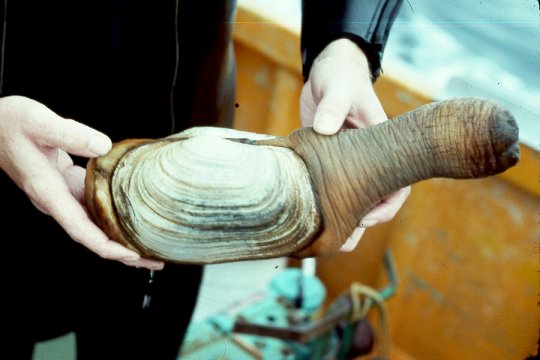

Geoduck clams are usually found two to three feet beneath the surface in mud, sand, or gravel. Dig Deep was given its name from the Lushootseed word for deep. Its neck/siphon length can reach 3 feet or more. This plant has the potential to live for over 100 years. The world’s largest burrowing clam is a native of the Pacific Northwest. The clams are then sorted by size and grade before being shipped to market. A hydraulic pump is then used to suck the clams out of their shells and into the trench. Trenching involves digging a long, narrow trench in the sand above where the clams are buried. To harvest geoduck clams, farmers use a process called “trenching”. Geoduck clams are one of the largest species of burrowing clams in the world and can live to be over 100 years old. The name “geoduck” is a derivation of the Chinook Jargon word gʷídəq, which means “dig deep”. Geoduck clams are a type of edible saltwater clam that is native to the west coast of North America. It is only when low tides (greater than -2.0 feet) are encountered that diggers discover them. They are extremely rare on the Pacific coast beaches near Clallam Bay and in the Strait of Juan de Fuca. geoducks are abundant in Puget Sound and Hood Canal, the only two major body of water where they can be found.

They can live for up to 168 years, reaching their maximum size in about 15 years. The growth rate of a geoduck is usually rapid, reaching 1.5 pounds within three to five years. Commercial fishing is important in the region due to the subtidal populations of these species found in Puget Sound, British Columbia, and Alaska. The geoduck clam is one of the largest clams found in the Pacific Northwest. They are a versatile ingredient that can be enjoyed in many different ways. Geoduck clams can be eaten raw, cooked, or used in a variety of recipes. First, remove the shell by cutting it open with a knife. Once you have caught a geoduck clam, you will need to clean it. Another method is to use a net to scoop them up from the water. One method is to use a rake or hoe to dig them out of the sand. There are a few different ways to catch geoduck clams. Geoduck clams are a popular delicacy in many parts of Asia, and are often harvested for their meat. They are the largest species of clam in the world, and can reach sizes of up to three feet in length. Made the best fritters with the belly.Geoduck clams are a type of saltwater clam that is native to the west coast of North America. It did not survive after arrival at destinationĪs always, wonderfully sweet and crunchy. I am still wondering why it took me so long to discover Taylor shellfish farms. I've been happy with prior orders of goeduck but recently I noticed the goeduck is considerably smaller Definitely will be buying again and recommending. This was my first experience with geoduck and it was very fresh and delicious. This second one was even larger (older) than the first, which was a good thing since I actually had more people over. I have always been a fan of mirugai and was so excited to learn that Taylor had it readily available! This was my second order and you did not disappoint. Packaged perfectly, arrived on time, and DANG these things taste good!!! Ate the siphon raw with lemon, chive, olive oil, soy. I bought it as a treat for my husband who had not had it in years. My dad has never tried it and I get them for my siblings and myself as treat.

I've never been unsatisfied with the geoducks I've received from you. Arranging the shipping was clear and simple, and a tracking number was provided.


 0 kommentar(er)
0 kommentar(er)
